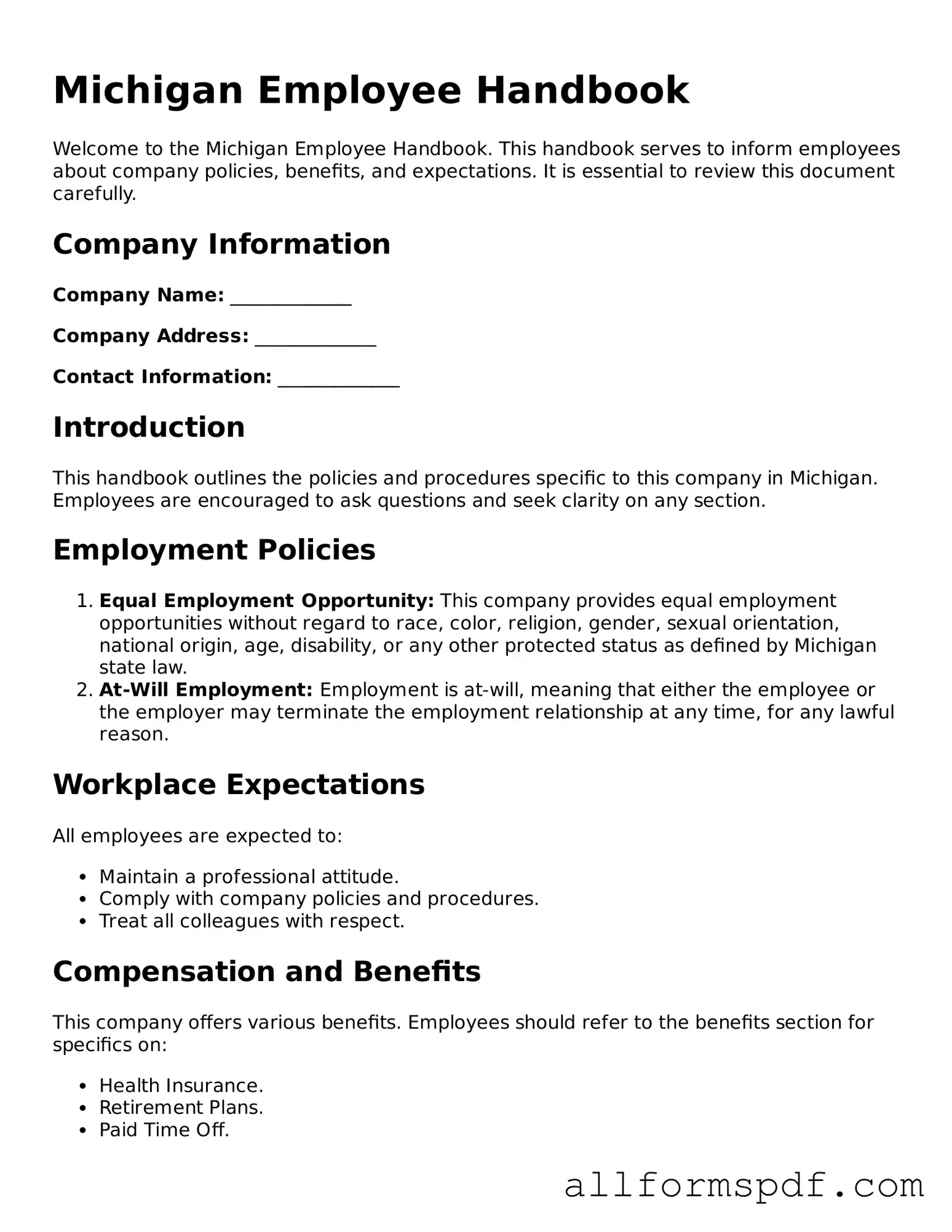Filling out the Michigan Employee Handbook form is a critical step for employees, yet many individuals make common mistakes that can lead to confusion or complications later on. One prevalent error is neglecting to read the entire document thoroughly. Employees often skim through the handbook, missing essential policies or procedures that could affect their employment. Understanding these guidelines is crucial for ensuring compliance and protecting one's rights.
Another frequent mistake involves failing to provide accurate personal information. Employees sometimes rush through the form, entering incorrect names, addresses, or contact details. This oversight can lead to issues with payroll, benefits, and communication. It is essential to double-check all entries for accuracy to avoid potential disruptions in employment-related processes.
In addition, individuals often overlook the importance of signing and dating the form. Some may assume that a verbal acknowledgment is sufficient, but without a signature, the form may not be considered valid. This simple step is vital in demonstrating that the employee has received and understood the handbook's contents.
Moreover, employees frequently forget to ask questions about unclear policies. When encountering unfamiliar terms or procedures, it is crucial to seek clarification. Ignoring this step can result in misunderstandings or misinterpretations of the company's expectations and rules.
Another mistake is failing to keep a copy of the completed form. Employees may think that submitting the form is the end of the process, but retaining a personal copy is essential for reference. This practice can be beneficial if any disputes arise regarding the policies outlined in the handbook.
Lastly, some employees do not update their information promptly when changes occur. Life events such as marriage, relocation, or changes in contact information should be communicated to the employer as soon as possible. Failing to do so can lead to complications in benefits enrollment and other important aspects of employment.
